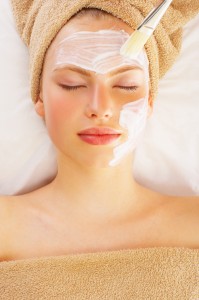 Part of the appeal and benefit of skin peels is that they are so versatile. They can be used just about anywhere on your body and provide a range of benefits from giving your skin a “refreshed” look to taking years off your face.
Part of the appeal and benefit of skin peels is that they are so versatile. They can be used just about anywhere on your body and provide a range of benefits from giving your skin a “refreshed” look to taking years off your face.
People often mistake microdermabrasion procedures for chemical peels. While the result is similar (removal of older dead skin cells to reveal younger skin), the mechanism of action is quite different. In microdermabrasion, physical exfoliation is used to break the glue that holds cells together. In peels, chemicals work to dissolve the glue that holds the cells together.
Chemical peels can be used for a whole list of problems, including improving skin hyperpigmentation, reducing mild scarring, correcting mild photoaging, removing excess skin oil and blackheads, and reducing fine lines and wrinkles.
Chemical peels cannot reduce blood vessels, are not recommended for dark-skinned individuals, and will not provide the same effect as a face lift. While a chemical peel cannot reduce the size of a pore, it can minimize a pore’s appearance.
When preparing for a peel, it is helpful to exfoliate for a week or two leading up to the procedure. Peels and microdermabrasion are most effective when used together. If preparing for a deeper peel, check with your doctor.
Very superficial peels, like Neutrogena Advanced Solutions Facial peel or beta-hydroxy products helps to smooth out roughened areas, remove blackheads, aids in application of self-tanning products and stimulates collagen regrowth (vitamin A peels). These types of peels can be do-it-yourself at home and affect only the outermost layer of epidermal skin cells.
Superficial peels are generally done by a spa or aesthetician. These can reduce skin blotches, smooth out skin, reduce the appearance of fine lines and are effective against acne. These peels go through a portion of the epidermis. Sometimes they go all the way through the epidermis.
Deeper peels, such as phenol peels, should only be done by a licensed dermatologist or board certified plastic surgeon. These peels go through the epidermis into the deep dermis. These peels are extremely effective at removing fine lines in wrinkles and evening skin’s appearance, but should only be attempted under the supervision of a professional.
These peels can truly restore radiance and retexturize the skin, but should only be done in a surgical setting with anesthesia. In additional, phenol peels are not suitable for patients with heart conditions or other underlying medical conditions.
Chemical peels affect different parts of the body differently. For example, skin on the face is extremely amenable to chemical peels, and heals rapidly after a peeling procedure. Skin on the back of the neck or hands is more likely than facial skin to experience complications such as scarring or discoloration.
One common effect of peeling anywhere on the body is increased sun sensitivity. During the healing period, your doctor will instruct you to stay out of the sun, as newly peeled skin is extremely susceptible to sun damage. If you have had peels, spf 30 sun block is always recommended.
